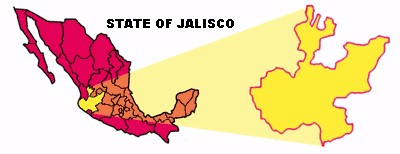
Pinguicula parvifolia
go to : Home index of species
TAXONOMY:
Family : Lentibulariaceae
Genus : Pinguicula
Name : Pinguicula parvifolia
Sub-classification (Casper) : link
Publication : Robinson in Proceedings of the American Academy of Arts and Sciences 29: 320-321. 1894. {Proc. Amer. Acad. Arts ; BPH 724.20}
DESCRIPTION : (by Casper)
Perennis. Rhizoma simplex breve radicibus filiformibus adventitiis numerosis. Folia numerosa biformia radicalia rosulata integerrima; inferiora (rosula "hiemis" ut dicitur) numerosa in secco cepis similia ex pluribus foliorum ordinibus composita, exteriora oblongo-lanceolata membranacea acuminata margine longue (- 4 mm) ciliata 15 - 22 mm longa +/- 2 - 3 mm lata, intima ovato-lanceolata squamosa acuminata margine longe ciliata vel glabrescentia (8) 10 - 15 (18) mm longa 3 - 5 (6) mm lata; superiora (rosula "aestatis" ut dicitur) pauca basi erecta petioliformi 8 - 14 mm longa lamina explicata ovato-oblonga vel elliptica margine vix involuta 5 - 9 mm longa 1.5 - 2.5 mm lata superne glandulis sessilibus dense et glandulis stipitatis disperse vestita. Hibernaculla nulla. Pedicelii1 - 3 erecti apicem versus angustati glandulis stipitatis singularibus obsiti 30 - 100 mm alti uniflori. Flores mediocres (12) 14 - 17 (21) mm longi (calcari incluso). Calyx bilabiatus extus glandulisstipitatis singularibus obsitus; labium superum profunde trilobum lobis oblongo-lanceolatis acutis vel obtusis; labium inferum usque ad basin fere bilobum lobis oblongo-lanceolatis acutis vel obtusis divergentibus. Corolla subisoloba purpureo-caerulea vel albida extus glandulis stipitatis singularibus obsita lobis oblongis vel obovato-oblongis vel spathulatis rotundatis vel raro subtruncatis 5 - 7 (9) mm longis (2) 2.5 - 3 (3.5) mm latis basin versus pilis uvae modo capitatis obsitis. Tubus subcylindricus in fauce luteo vix dilatatus basin versus parum angustatus 5 - 7 mm longus 3 - 4 mm latus sine palato intus pilosus infa labii inferi corollae pilis longis uvae modo capitatis basin versus pilis brevibus retro conversis uvae modo capitatis in lineis triabus. Calcar subcylindricum obtusum vel acutiusculum obliquum formans vel porrectum intus pilosum. Stamina +/- 1.5 mm longa; pollen (3) 4 - 5 (6) - colporatum . Ovarium subglobosum glandulis stipitatis disperse obsitum. Stigma bilabiatum labio infero suborbiculato. Capsula subglobosa. Semina scobiformia numerosa alveolata.
Chromosomata ignota
translation :
- Soon -
ORIGIN AND HISTORY :
From Mexico
Localisation / Map:
The type specimen comes from Sierra de San Esteban, near Guadalajara in Jalisco state in Mexico.
(click on the map for better location and relief map)
HABITAT:
According to the publication, Pinguicula parvifolia can be found on mossy gravel bluffs.
TEMPERATURE and PRECIPITATIONS :
Click on the graph to enlarge and see the graph of normal precipitation and normal average temperatures. Normal values are 30-year averages for the period 1961 to 1990. The weather stations are grouped by region (see map of weather stations).
Introduction in culture :
CULTURE AND MULTIPLICATION :
(North hemisphere, France near Paris, in a polycarbonate greenhouse - see the map -)
Life cycle : The life cycle observed in culture for this Pinguicula consists of two seasons, one wet and the other dry (see link). The plant forms different leaf rosettes according to the season. During the resting months (winter) the small succulent rosette is composed of numerous non-carnivorous leaves. The carnivorous leaves are produced in spring and during all summer. The life cycle of the plant is probably similar in it's native habitat but I have no data.
Media : I use a 100 % mineral media : 2 perlite, 2 vermiculite, 1 small sand (for aquarium), 1 fine white sand, 1 pouzzolane (volcanic lava), 1 aqualit (expansed ceramic for aquarium). The aqualit can be replaced by 1 of pouzzolane. Plants in this media grow slower but have a stronger root system.
Pot : plastic, colour terracotta, diameter 12.5cm, height 12cm.
Cultivation : I think that a slightly airy situation inside the greenhouse is important to avoid air stagnation. For this reason, I use a fan 24h/24h all the year round.
Watering is very important : from May to September (summer). I let the media drying slightly between two watering. I use rain water poured on the top of the pot taking care not to wet the rosette. From October to April, It is important to let the media drying completely (no watering) but with an atmospheric humidity of about 80%.
The mentioned months are indicative and can change according to your own growing conditions. In fact, when this Pinguicula begins to produce its non-carnivorous leaves, you have to stop watering and let the pot drying out completely. Inversely, when the plant begins to produce in early spring its carnivorous leaves, you have to progressively start watering again the pot.
Temperatures : during growth period, day temperatures are about 25°C but can reach 35°C when the sun is shining on the greenhouse in spite of the use of shading covers. Night temperatures are around 20°C. During resting period : day/night
over freezing point. Lower temperature observed : - 4°C. I use an electronic petroleum heater to provide heat.Flowering period :
Multiplication : The plants can be propagated easily using non-carnivorous leaves separated from the bulb-rosette at the end of winter. You only have to carefully tear out all the leaf particularly with the white base. The new plantlets will sprout from this area. Don't try with the summer leaves, it is harder.
PICTURES: (click to enlarge)